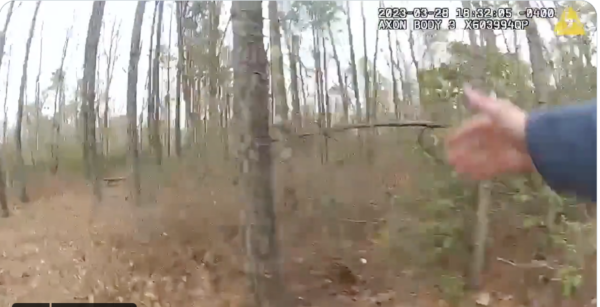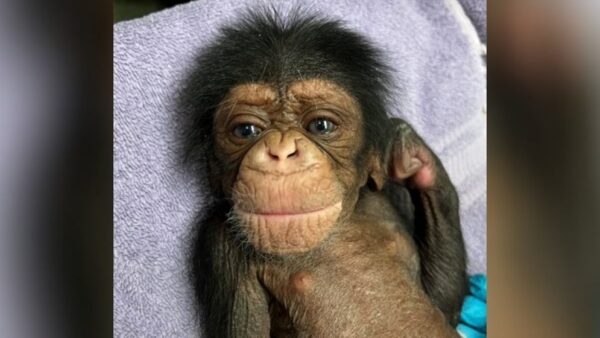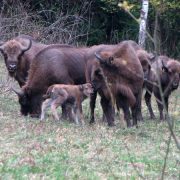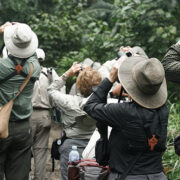
Imagine being locked in a cage for nearly the first three decades of your life. How would you react when you finally found yourself outside? What would you think of the sky?
While that may seem like some kind of dystopian story for many of us, it was reality for one chimpanzee being held in a laboratory for the first 28 years of her life.
Until recently, that is.
USA Today reports, “A 28-year-old chimpanzee, who was caged her entire life, saw the open sky for the first time in her life in a heartwarming video captured at her new home in Florida.
Vanilla, the rescued chimp, spent years at a New York biomedical research laboratory where chimps were often housed in small cages, which were “suspended from the ground like bird cages,” according to Save the Chimps, a chimpanzee sanctuary.
In 1995, Vanilla and about 30 chimps were sent to the Wildlife Waystation – a now-closed animal sanctuary in California – where she joined a small family group.
When Wildlife Waystation closed in 2019, due to financial difficulties, the California Department of Fish and Wildlife moved all the animals living in the Los Angeles County sanctuary to locations around the country. CDFW officials said finding a new home for the 42 chimps “proved especially difficult.”
“In the heartwarming video — which was shared at Friday’s American Society of Primatologists symposium in Reno by Save the Chimps’ primatologist Dr. Andrew Halloran — she was greeted with a huge hug by alpha male Dwight as she left her enclosure, gazed skyward and then explored her new island.
“In California, Vanilla lived with a handful of chimps inside a chain-link fence cage with no grass and very little enrichment,” Halloran told The Post.
Her new island refuge is home to 226 chimpanzees discarded from laboratories, the entertainment industry, the exotic pet trade and roadside zoos, according to the organization, and many have previously endured solitary confinement and never interacted with other chimps before.
“Vanilla is settling in very well,” he continued. “When she’s not exploring the island with her friends, she can usually be found perched atop a three-story climbing platform surveying her new world,” according to The New York Post.
Researchers using chimpanzees in laboratory settings has a complex and controversial history, beginning in the early twentieth century. Our closest living relatives, chimpanzees, can offer valuable insights for scientific research, including biomedical and behavioral studies.
In the 1920s, Robert M. Yerkes, an American psychologist, established the first primate research center in the United States. Yerkes and his colleagues conducted pioneering studies on chimpanzee behavior and cognition, laying the groundwork for future research.
Chimpanzees became especially valuable in biomedical research due to their genetic similarity to humans. During the 1950s and 1960s, they were used to help scientists create vaccines, including the oral polio vaccine. Decades later, chimpanzees were infected with diseases like hepatitis, malaria, and HIV to study their effects and develop treatments. Ultimately using them in testing helped lead to effective treatments and preventive measures that have saved millions of lives across the world.
[Read More: Ancient Cavings Not Considered To Be Made By Humans]










Why couldnt they let chimp outside in some yard area??
Human inmates get Better care alone